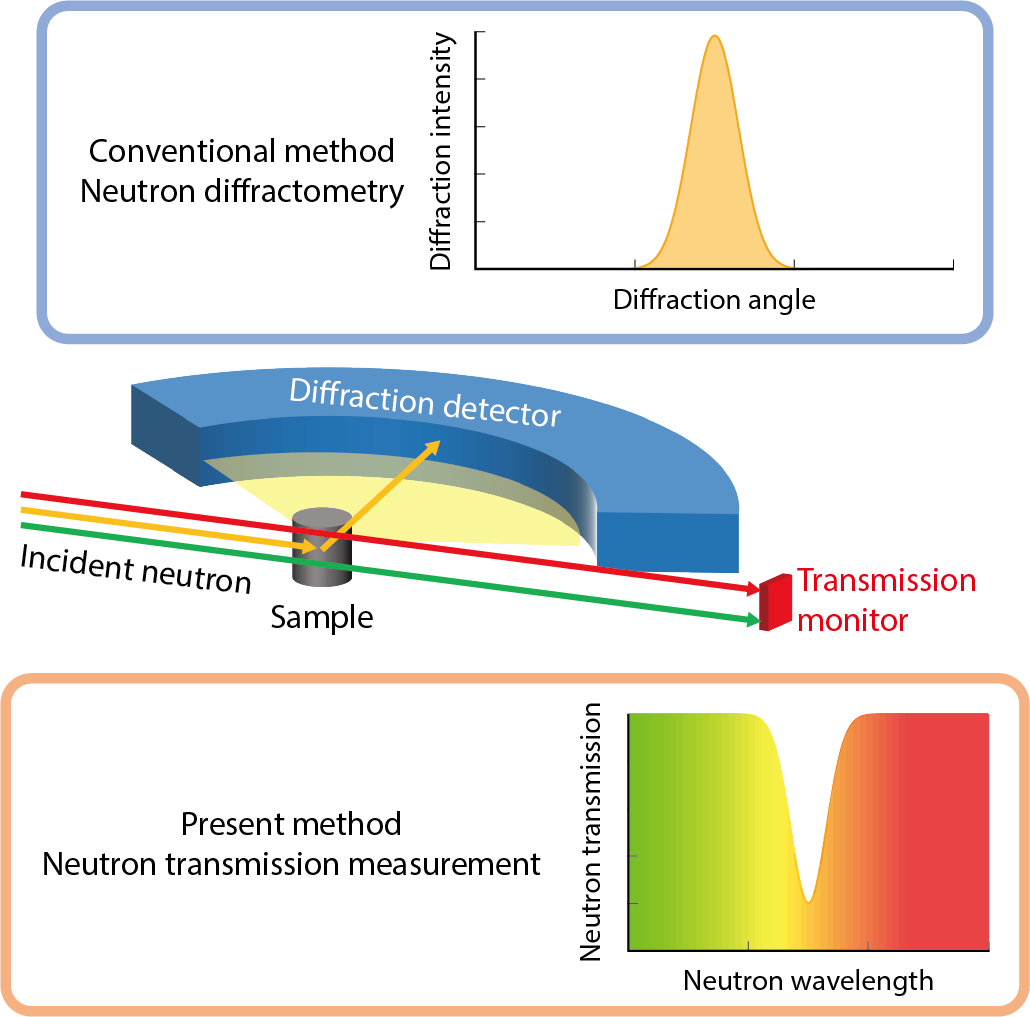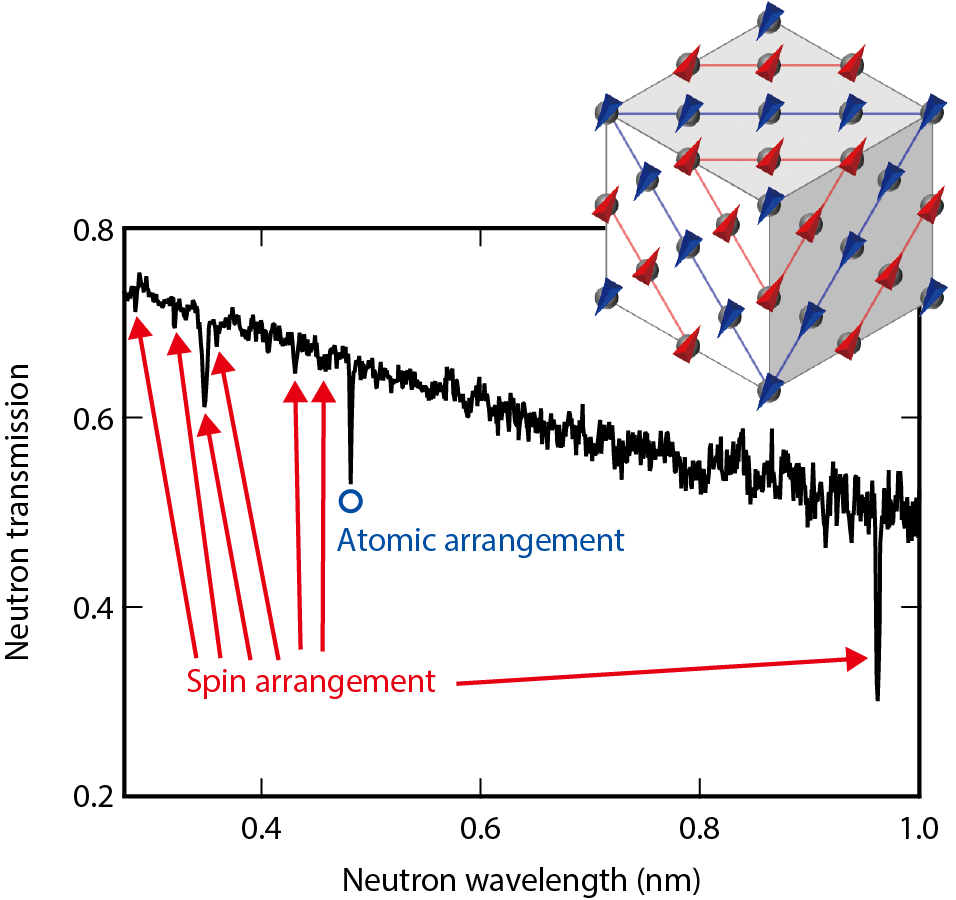
Fig.5-15 Scheme of comparison of neutron diffraction and neutron transmission

Fig.5-16 Neutron-transmission spectrum of single-crystal nickel oxide
Neutron diffractometry is a powerful technique for characterizing atomic and spin arrangements from Bragg-diffraction patterns (Fig.5-15). Generally, the diffraction patterns are measured over a wider range of diffraction angles. On the other hand, the wavelength dependence (spectrum) of neutron transmission is also effective for characterizing the atomic and spin arrangements. The Bragg diffraction appears as dips in the neutron-transmission spectrum. Neutron-transmission measurement has an advantage in that it can be measured with only small windows. The neutron-transmission measurement is used to determine the atomic arrangements and is also applied to their imaging measurements.
Based on those previous studies using neutron transmission, we hypothesized that neutron transmission must also be useful for determining spin arrangements. For demonstration purposes, we performed neutron-transmission measurements for a typical spin arrangement. Fig.5-16 shows the neutron-transmission spectrum of a single crystal of nickel oxide (NiO), which is a typical anti-ferromagnet. The neutron-transmission spectrum of NiO exhibits several dips (Bragg dips) due to the spin arrangement (→), as well as the atomic arrangement (◯). Similarly, the neutron-transmission spectrum of NiO powder shows step-like decreases called Bragg edges, which are caused by the anti-ferromagnetic spin arrangement (not shown).
These results reveal that neutron-transmission measurement is useful for characterizing spin arrangements. In particular, it is suitable for measurements under extreme sample environments, such as high pressure, high magnetic field, and ultra-low temperature, which often limit the window size for the diffracted neutron and thus prevent the neutron-diffraction pattern for the wide diffraction angle from being obtained. Furthermore, neutron-transmission measurement can be applied to imaging measurements of the spin arrangements inside magnetic-recording media.